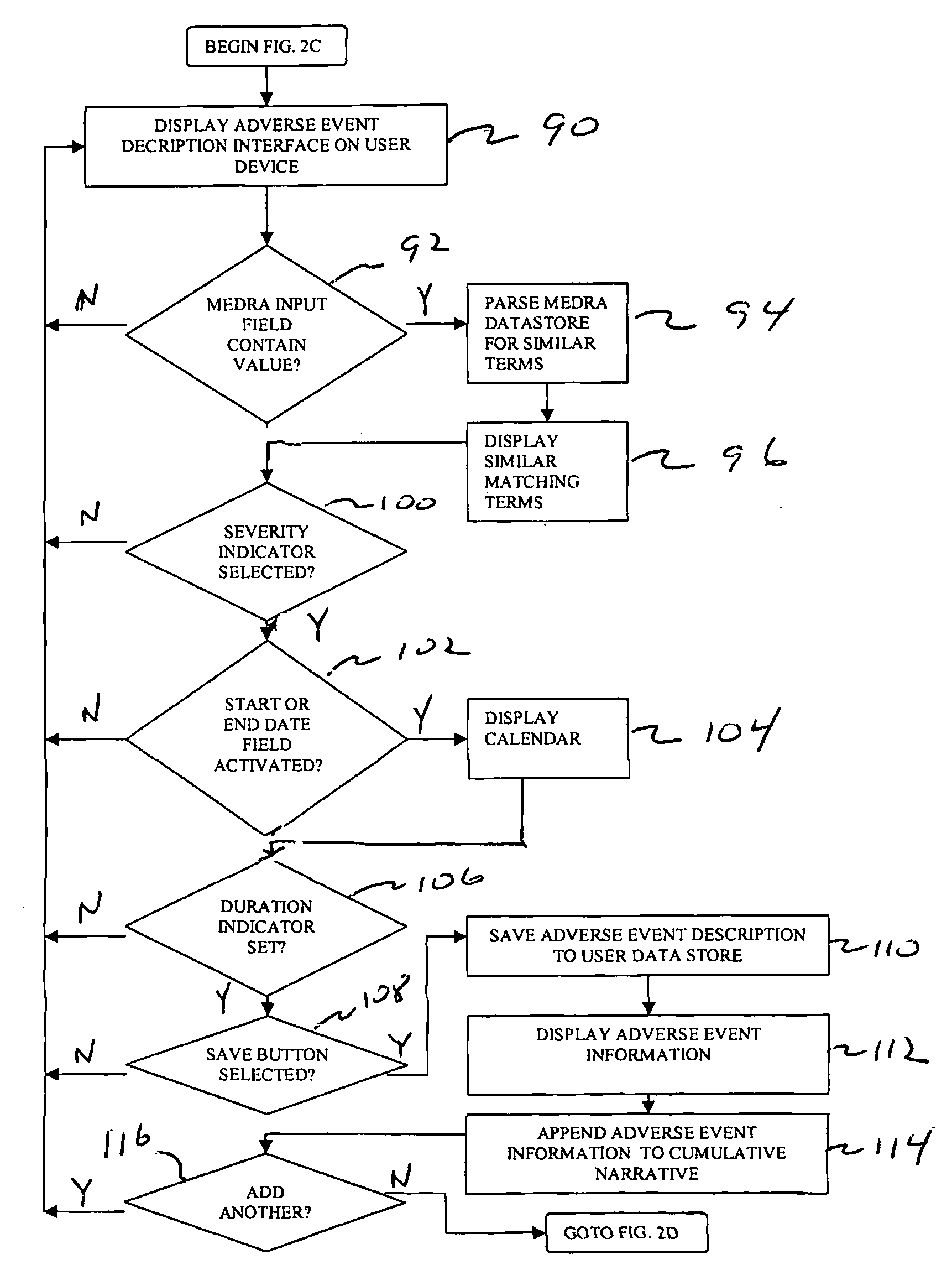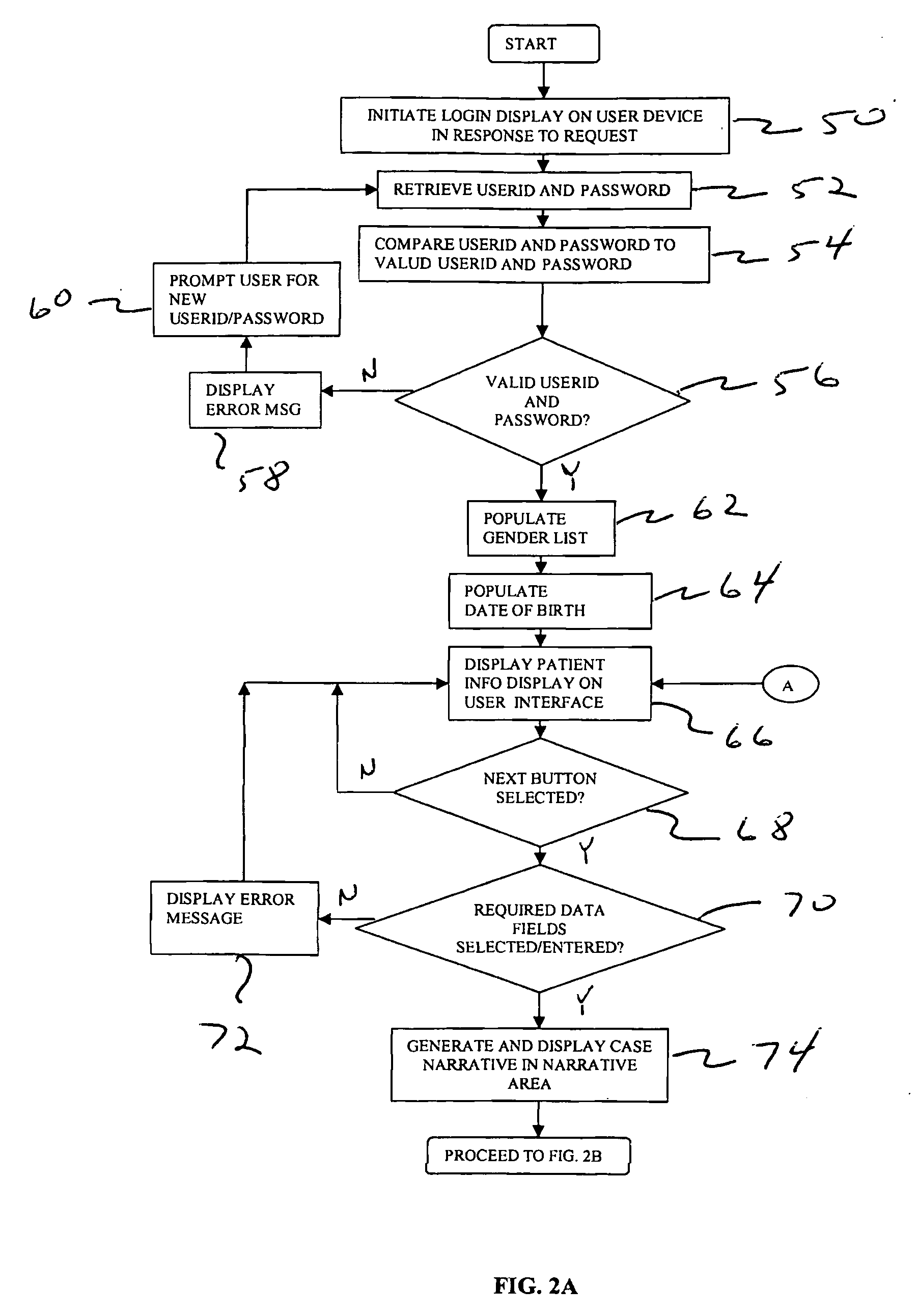System and techniques for reporting adverse effects
a technology of adverse effects and reporting systems, applied in the field of reporting systems, can solve the problems of low percentage of all adverse events being reported, negative attention these issues generally receive, delay in action, etc., and achieve the effect of facilitating the process, reducing the number of adverse events, and increasing the accuracy of reporting adverse events
- Summary
- Abstract
- Description
- Claims
- Application Information
AI Technical Summary
Benefits of technology
Problems solved by technology
Method used
Image
Examples
Embodiment Construction
[0027]FIG. 1 shows a computer-based system 10 for collecting and reporting adverse events associated with a patient. Although the example discussed below relates to the medical field, it will be appreciated by one skilled in the art that the present system and techniques can be utilized across various types of industries. For example, the system and techniques disclosed herein can be utilized for collecting and reporting information relating to food, nutraceuticals, nutritionals, cosmetics, health foods, natural foods / products / medicines, biologics, radiologicals, over-the-counter products, as well food supplements.
[0028]Preferably, the system 10 is configured to include an access device 12 that is in communication with a server 22 over a network 20. The access device 12 can include a personal computer, laptop computer, or other type of electronic device, such as a cellular phone or Personal Digital Assistant (PDA). Preferably, the access device 12 is configured to include a browser ...
PUM
 Login to View More
Login to View More Abstract
Description
Claims
Application Information
 Login to View More
Login to View More - R&D
- Intellectual Property
- Life Sciences
- Materials
- Tech Scout
- Unparalleled Data Quality
- Higher Quality Content
- 60% Fewer Hallucinations
Browse by: Latest US Patents, China's latest patents, Technical Efficacy Thesaurus, Application Domain, Technology Topic, Popular Technical Reports.
© 2025 PatSnap. All rights reserved.Legal|Privacy policy|Modern Slavery Act Transparency Statement|Sitemap|About US| Contact US: help@patsnap.com



